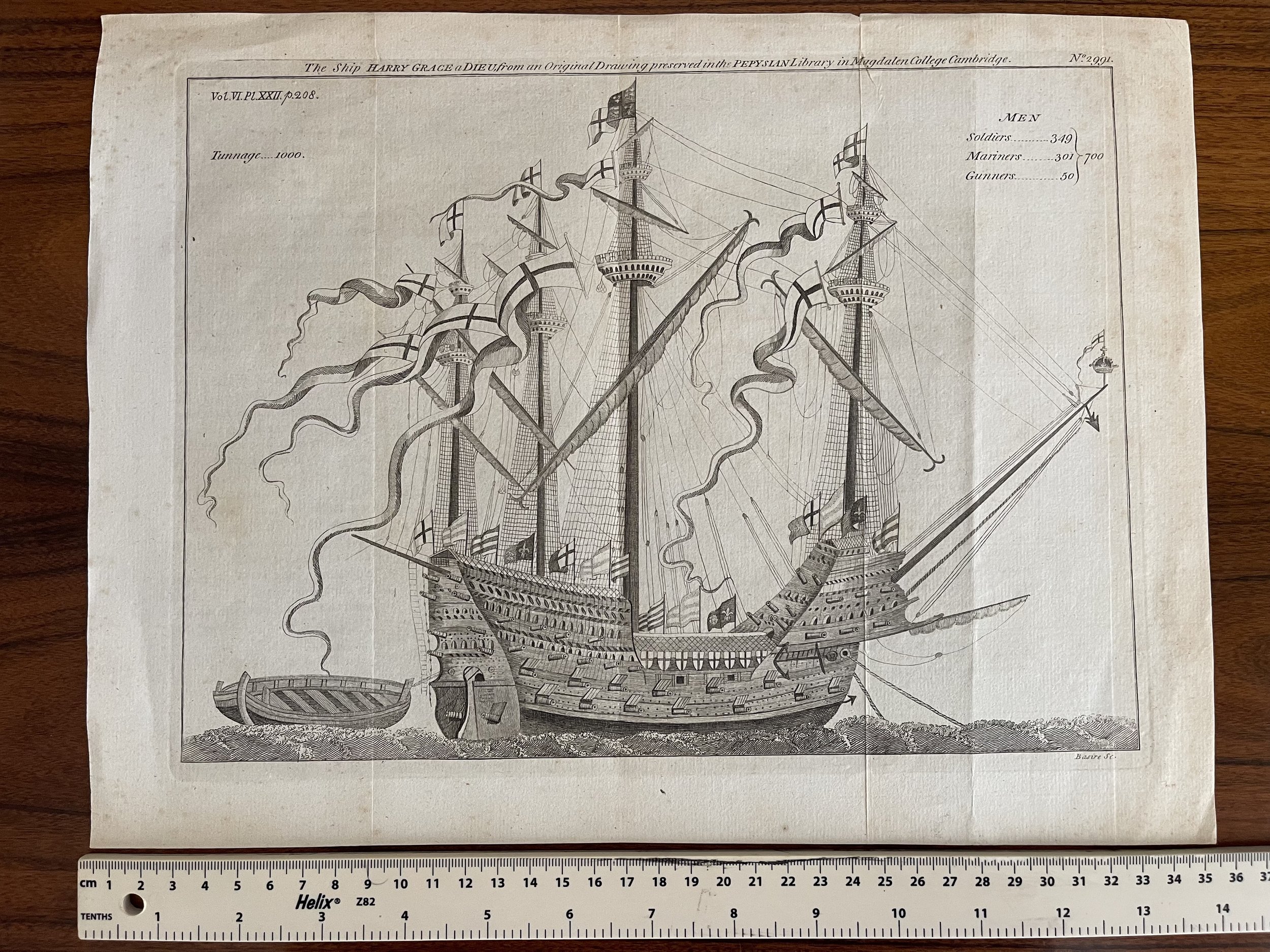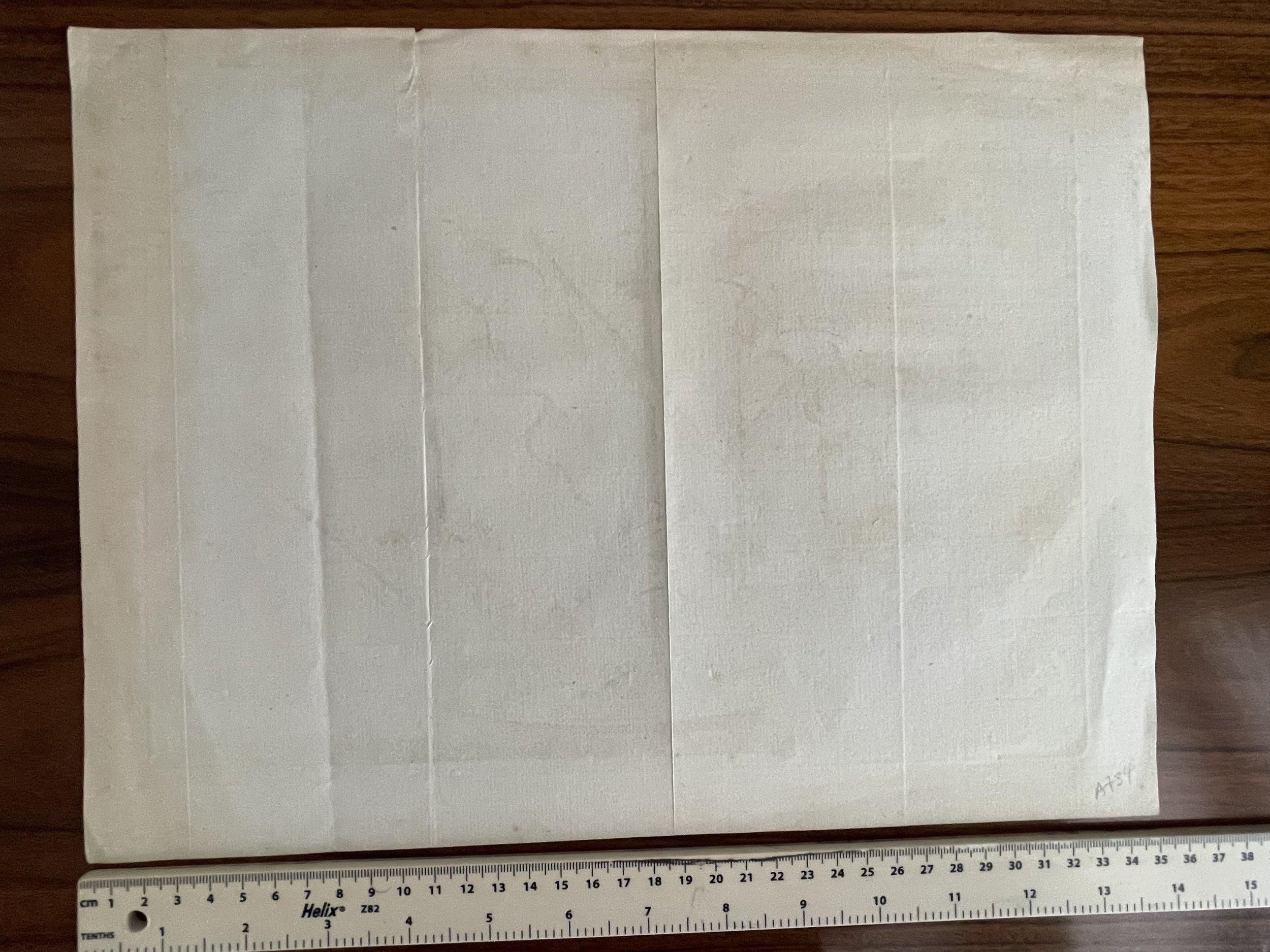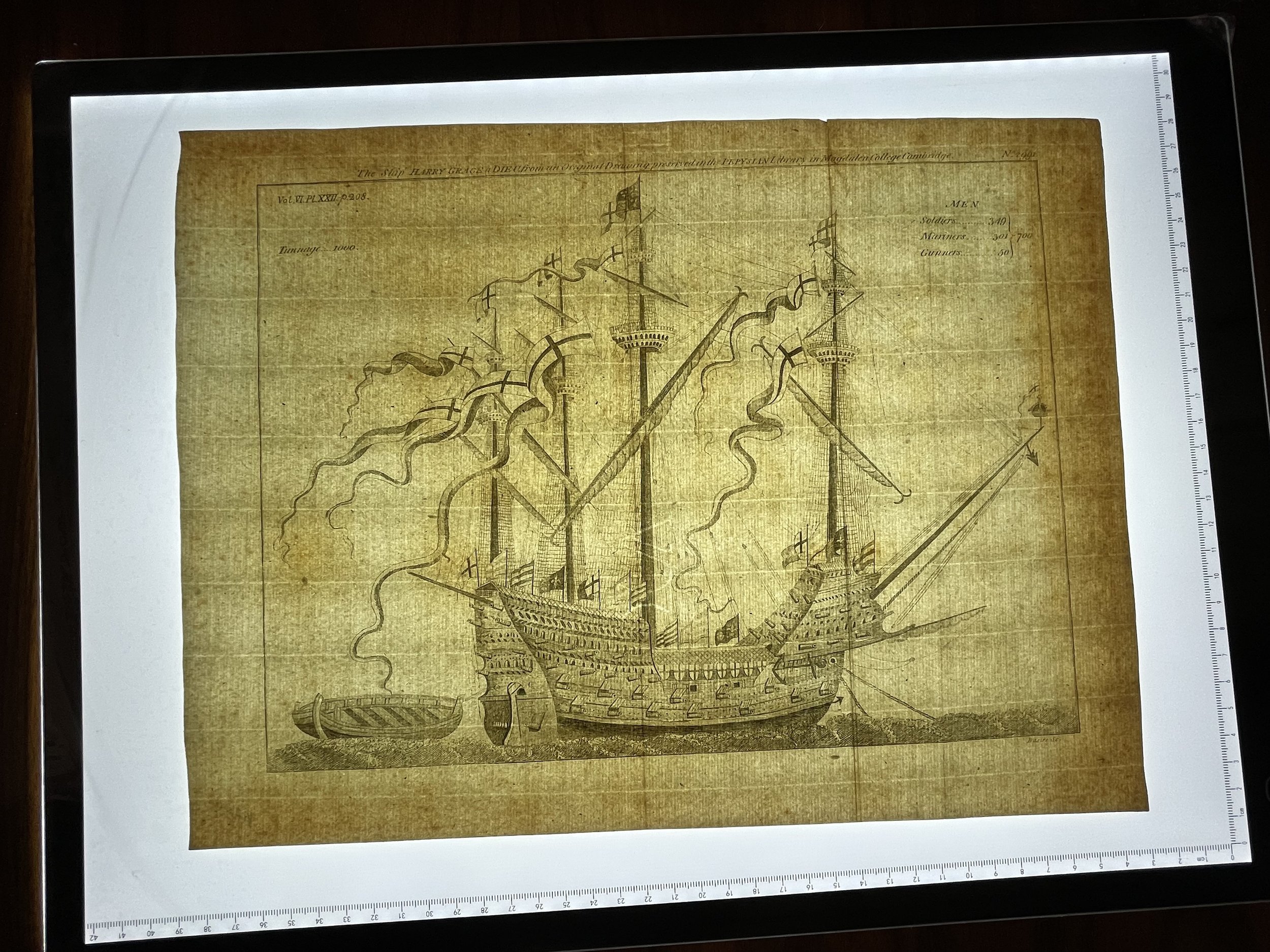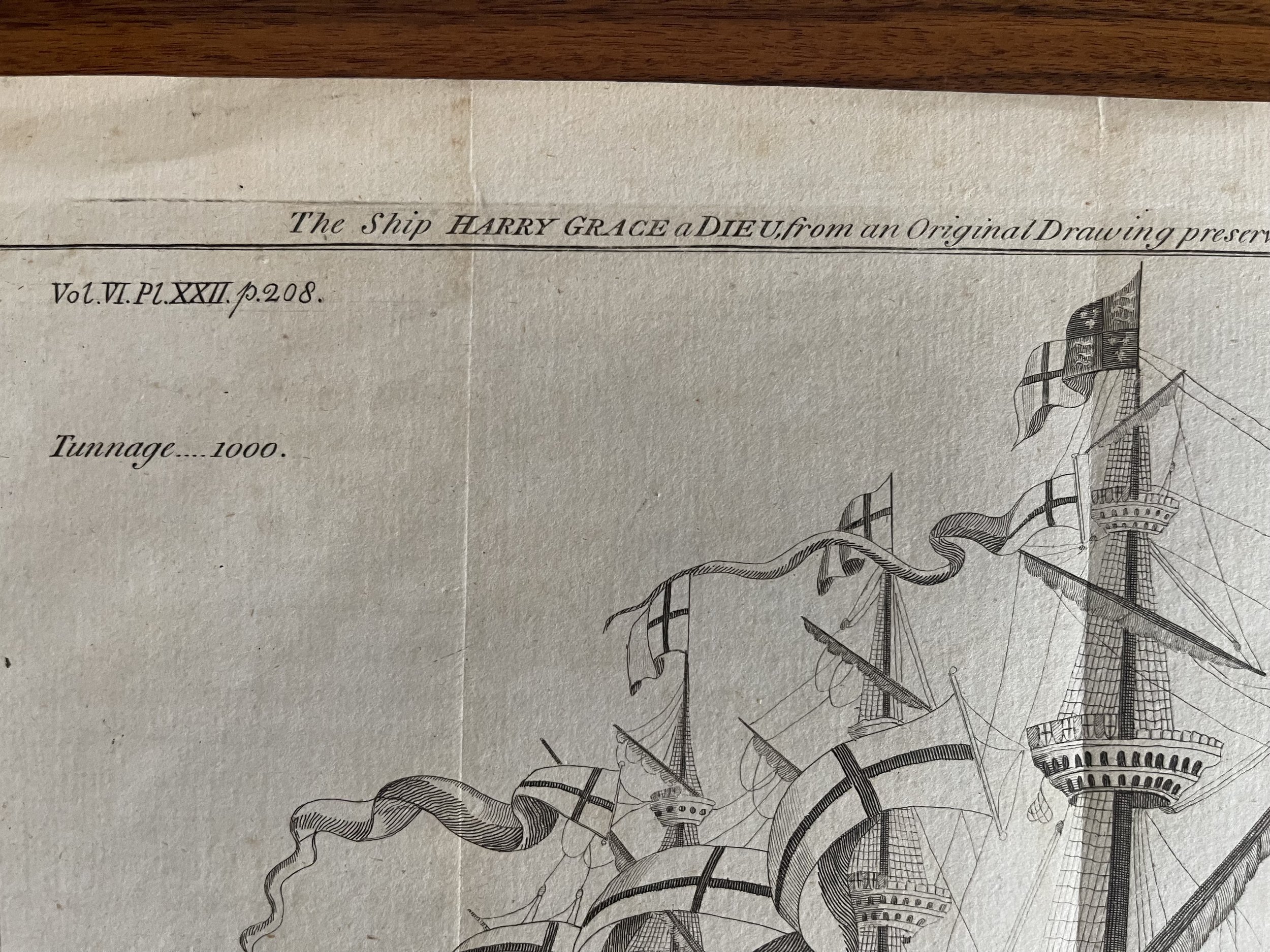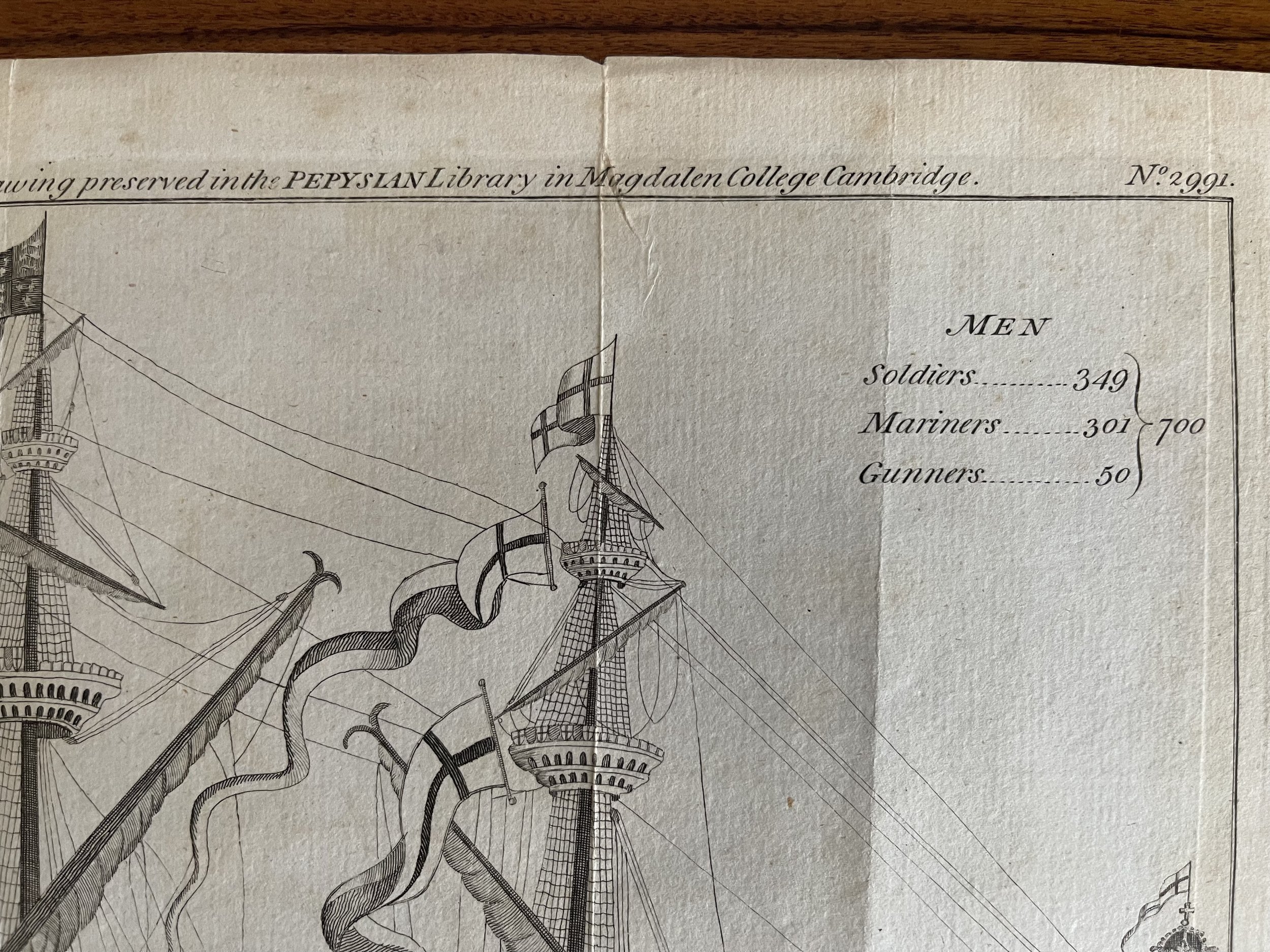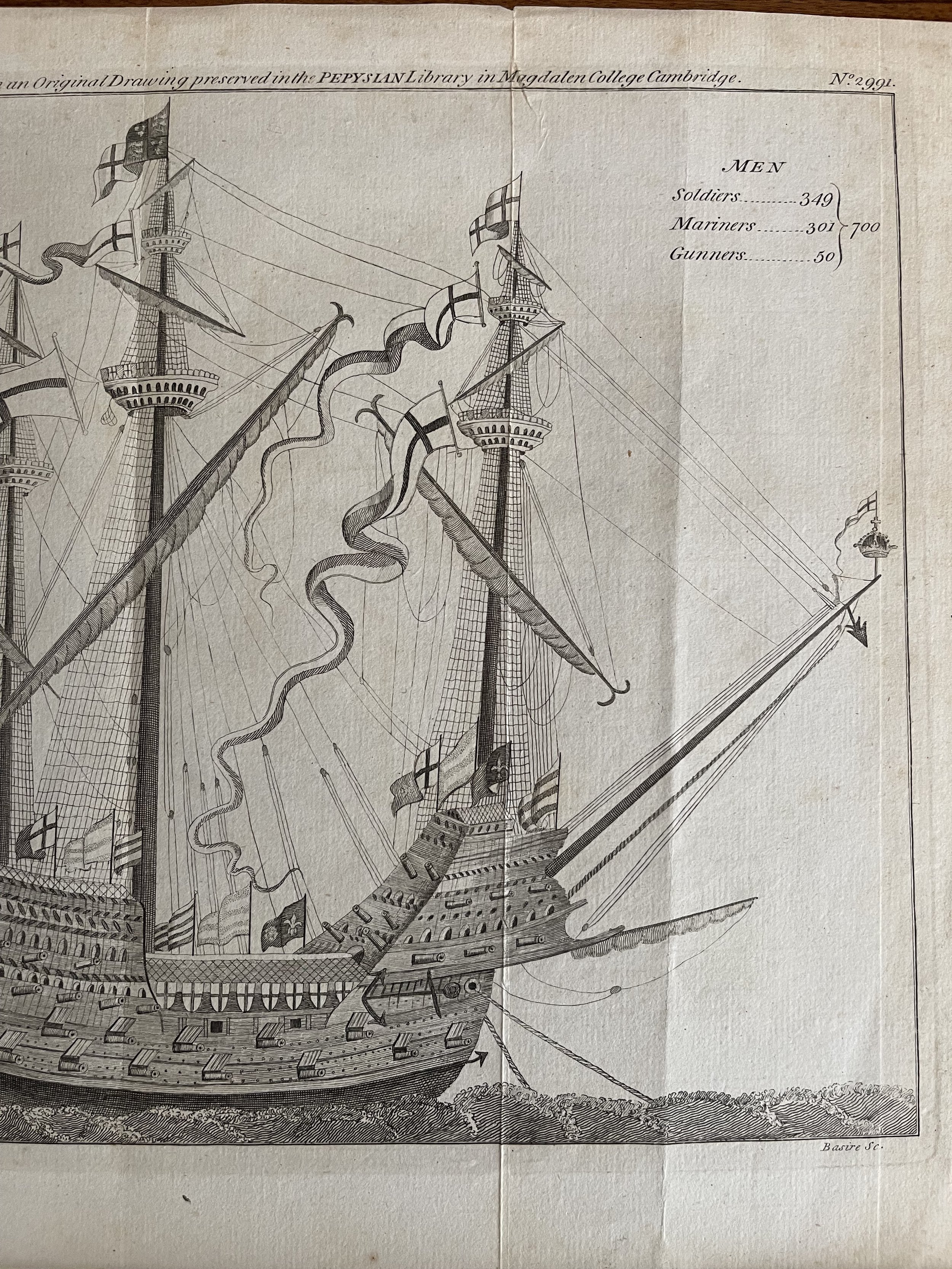The Harry Grace a Dieu from a drawing in the Anthony Roll in the Pepysian Collection - Isaac Basire - Circa 1740
A Rare line A line engraving of the 80-gun carrack or ‘great ship’ Great Harry – also called Henry (or Henri) Grace à Dieu – at anchor in a calm sea, from a drawing in the Anthony Roll in the Pepysian Collection at Cambridge. The ship’s sails are furled and her pennants flutter elegantly in a light breeze. Although this is a tranquil scene, the open gun-ports indicate her firepower. The engraving is made after a drawing in the Anthony Roll, which was a record of the ships in the Tudor navy, presented to Henry VIII by Anthony Anthony, a naval ordnance official, in 1546.
Henry Grace à Dieu ("Henry, Thanks be to God"), also known as Great Harry was an English carrack or "great ship" of the King's Fleet in the 16th century, and in her day the largest warship in the world.
Contemporary with Mary Rose, Henry Grace à Dieu was even larger, and served as Henry VIII's flagship. Built by William Bond (master shipwright) under the direction of Robert Brygandine (clerk of the ships), she had a large forecastle four decks high, and a stern castle two decks high. She was 165 feet (50.29 m) long, measuring 1,000 tons burthen and having a complement of 700 men. She was ordered by Henry VIII, probably to replace Grace Dieu (later renamed Regent), which had been destroyed at the Battle of Saint-Mathieu in August 1512. At a time of naval rivalry with the Kingdom of Scotland, her size was in response to the Scottish ship Great Michael, which had herself been the largest warship when launched in 1511.
Isaac Basire (20 September 1704 – 24 August 1768) was an engraver and first in a family line of prolific and well-respected engravers. Isaac Basire was known as a map engraver. His most well-known work is the frontispiece to an edition of Bailey's dictionary (1755).
A Rare line A line engraving of the 80-gun carrack or ‘great ship’ Great Harry – also called Henry (or Henri) Grace à Dieu – at anchor in a calm sea, from a drawing in the Anthony Roll in the Pepysian Collection at Cambridge. The ship’s sails are furled and her pennants flutter elegantly in a light breeze. Although this is a tranquil scene, the open gun-ports indicate her firepower. The engraving is made after a drawing in the Anthony Roll, which was a record of the ships in the Tudor navy, presented to Henry VIII by Anthony Anthony, a naval ordnance official, in 1546.
Henry Grace à Dieu ("Henry, Thanks be to God"), also known as Great Harry was an English carrack or "great ship" of the King's Fleet in the 16th century, and in her day the largest warship in the world.
Contemporary with Mary Rose, Henry Grace à Dieu was even larger, and served as Henry VIII's flagship. Built by William Bond (master shipwright) under the direction of Robert Brygandine (clerk of the ships), she had a large forecastle four decks high, and a stern castle two decks high. She was 165 feet (50.29 m) long, measuring 1,000 tons burthen and having a complement of 700 men. She was ordered by Henry VIII, probably to replace Grace Dieu (later renamed Regent), which had been destroyed at the Battle of Saint-Mathieu in August 1512. At a time of naval rivalry with the Kingdom of Scotland, her size was in response to the Scottish ship Great Michael, which had herself been the largest warship when launched in 1511.
Isaac Basire (20 September 1704 – 24 August 1768) was an engraver and first in a family line of prolific and well-respected engravers. Isaac Basire was known as a map engraver. His most well-known work is the frontispiece to an edition of Bailey's dictionary (1755).
A Rare line A line engraving of the 80-gun carrack or ‘great ship’ Great Harry – also called Henry (or Henri) Grace à Dieu – at anchor in a calm sea, from a drawing in the Anthony Roll in the Pepysian Collection at Cambridge. The ship’s sails are furled and her pennants flutter elegantly in a light breeze. Although this is a tranquil scene, the open gun-ports indicate her firepower. The engraving is made after a drawing in the Anthony Roll, which was a record of the ships in the Tudor navy, presented to Henry VIII by Anthony Anthony, a naval ordnance official, in 1546.
Henry Grace à Dieu ("Henry, Thanks be to God"), also known as Great Harry was an English carrack or "great ship" of the King's Fleet in the 16th century, and in her day the largest warship in the world.
Contemporary with Mary Rose, Henry Grace à Dieu was even larger, and served as Henry VIII's flagship. Built by William Bond (master shipwright) under the direction of Robert Brygandine (clerk of the ships), she had a large forecastle four decks high, and a stern castle two decks high. She was 165 feet (50.29 m) long, measuring 1,000 tons burthen and having a complement of 700 men. She was ordered by Henry VIII, probably to replace Grace Dieu (later renamed Regent), which had been destroyed at the Battle of Saint-Mathieu in August 1512. At a time of naval rivalry with the Kingdom of Scotland, her size was in response to the Scottish ship Great Michael, which had herself been the largest warship when launched in 1511.
Isaac Basire (20 September 1704 – 24 August 1768) was an engraver and first in a family line of prolific and well-respected engravers. Isaac Basire was known as a map engraver. His most well-known work is the frontispiece to an edition of Bailey's dictionary (1755).
Code : A734
Cartographer : Cartographer / Engraver / Publisher: Isaac Basire
Date : Publication Place / Date - 1740 Approx
Size : Sheet size: Image Size: 26.5 x 36 inches
Availability : Available
Type - Genuine - Antique
Grading A-
Where Applicable - Folds as issued. Light box photo shows the folio leaf centre margin hinge ‘glue’, this is not visible otherwise.
Tracked postage, in casement. Please contact me for postal quotation outside of the UK.
